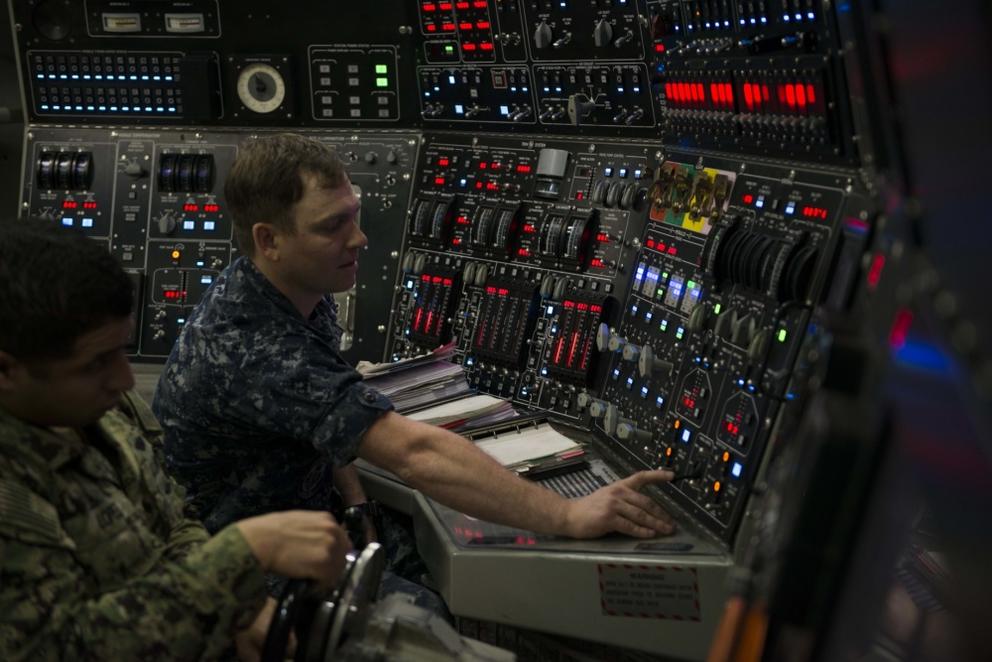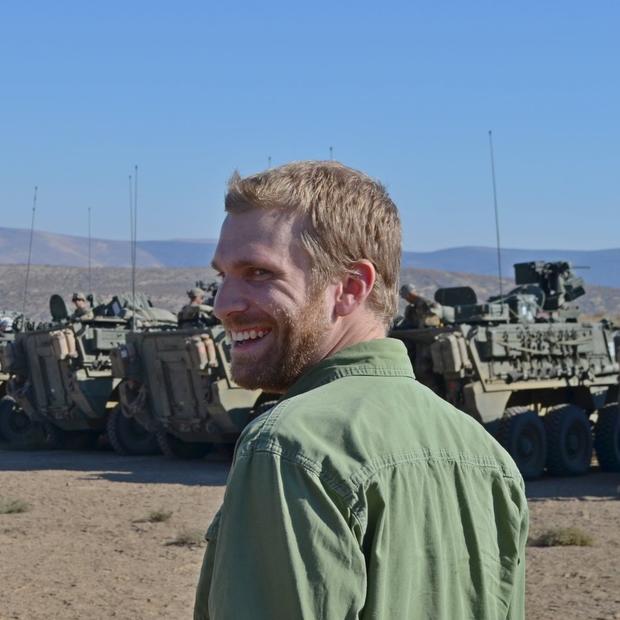On Sept. 29, Washington Physicians for Social Responsibility held a town hall on Washington’s history with nuclear weapons that brought together anti-war, environmental and Indigenous rights activists. Activists marched on the Federal Building in Seattle the following day to protest Trump’s nuclear policies.
“We’re a little more alarmed than in the past, so we’re working hard to affect Congress and also working to build a movement of people,” said Dr. Joe Berkson with Washington Physicians for Social Responsibility. “The issue is the new nuclear arms race. There’s an expansion, the current administration wants to expand into new nuclear weapons and redo the whole nuclear weapons arsenal for a large amount of money, and we are opposed to that.”
Washington has a longstanding relationship with nuclear weapons. The plutonium in the first nuclear bomb ever detonated was processed at the Hanford Site outside the Tri-Cities, and the site remained active well into the 1980s. Ballistic missile submarines still transit Puget Sound today.
The state also has been a hotbed of anti-nuclear activism. In 1984, the Legislature passed a law preventing state emergency managers from preparing for a nuclear strike in a symbolic acknowledgment of movement toward ending the Cold War and the nuclear arms race.
Berkson and others hope to draw on that history to broaden the conversation about nuclear weapons from the abstract fears of nuclear war to the tangible impacts the weapons have had on communities and on the environment. Activists hope to give new life to anti-nuclear activism in Washington.
“We’ve focused a lot of times on the environmental issues but now we’re really looking to hit home with the health issues,” said Twa-le Abrahamson of the Spokane Tribe. Spokane and Yakama people have dealt with the radioactive contamination from Hanford that has poisoned their lands and, activists say, caused health problems for tribal members living on their reservations.
Abrahamson noted Trump administration has made deep cuts to cleanup efforts at Hanford and moved to roll back regulations on nuclear waste handling.
“We get some impacts on the daily. And our water has been contaminated forever, so forever we’ll have transportation of that waste,” she said. “Nobody talks about that. They want to act like that’s a history, but we have that going through our communities.”
For years, anti-nuclear activists have continuously protested against the U.S. Navy's ballistic missile submarines stationed at Naval Base Kitsap-Bangor, which some nuclear weapons watchdogs believe houses 1,300 nuclear warheads. Berkson claimed the base, located near Hood Canal, is home to about one-third of America’s nuclear arsenal and is the third-largest cache of nuclear weapons in the world.
But the actual numbers — and locations — of America’s nuclear weapons are hard to nail down.
“It is U.S. government policy that we can neither confirm nor deny the presence or absence of nuclear weapons at any general or specific location” said Sheila Murray, a spokesperson for Navy Region Northwest, noting that for safety and security the information is tightly guarded.

Activists argue that those weapons and other large military facilities make Western Washington an attractive target for strikes by rival nuclear powers. As Trump and North Korean dictator Kim Jong Un traded insults, some Seattleites worried that the city would be in Kim’s crosshairs.
New fears of nuclear conflict have spurred a wave of activism among younger Americans. Jeanelle Sales, a University of Washington student with the campus chapter of Beyond the Bomb, became active after a nuclear false alarm in her home state of Hawaii. The thought that her friends and family could have been caught in the blast terrified her. “It was a major wake up call for me,” she said.
Among the activists’ concerns is the Trump administration’s keen interest in tactical or “low yield” nuclear warheads that are easier to deploy and which produce smaller explosions. The fear among activists is that these weapons could make a nuclear strike much more likely.
“We are in conflicts all over the globe. Somebody was bombing Saudi Arabia, there’s India and Pakistan, Russia and Ukraine there’s a shooting war,” Berkson said. “So I think it’s easy to get drawn into these regional conflicts and then [decide] ‘Oh, that would be a nice place for our little nuke.’ ”
Berkson noted that smaller bombs are being built now, and that he and other activists are pressuring Congress to prevent their deployment.
Murray, the Navy Region Northwest spokesperson, declined to say whether those weapons would be in the hands of sailors in the Pacific Northwest. She told Crosscut: “The U.S. must maintain a broad portfolio of capabilities with maximum versatility across the widest possible spectrum of threats to the American people, [and] the Pacific Northwest hosts some of the nation's most vital Navy assets.”
As Russia and China challenge America, they are likely to want to remind the world of their own nuclear capabilities — and are probably not interested in going along with any efforts to abolish nuclear weapons that activists might suggest, said Tom Nichols, a professor at the U.S. Naval War College who studies nuclear strategy. Russian President Vladimir Putin has bragged about his nation’s nuclear capabilities and expressed a desire to upgrade them.
“The Russians are not going to give up their nukes for a while because they are a weak power conventionally and so that’s all they’ve got,” Nichols told Crosscut.
“My argument is that if you’re going to be serious about arms reductions, you have to have a plan, something that’s coherent and makes sense and threads its way into a coherent vision of national security,” Nichols continued. “You can’t just stomp your foot on the floor and say ‘no nuclear weapons.’ … I don’t like them either, but that’s not a plan.”
Berkson acknowledges that any feasible effort at nuclear abolition would have to be international and “would take all nine nuclear powers getting together to talk about how much they cost and how bad they are for the environment and agreeing to eliminate them.”
Berkson pointed out that renewed production of nuclear warheads has the potential to cause more environmental disasters like Hanford. However, some advocates of revamping the American nuclear arsenal have argued that modernizing the weapons — and the infrastructure that supports them — may actually be necessary to avoid a nuclear catastrophe.
President Barack Obama suggested a $1 trillion nuclear modernization program aimed both at upgrades and maintenance. After the end of the Cold War, the weapons became an afterthought and many are aging badly. Storage facilities are crumbling and infested with rats and snakes, and many of the control systems still use floppy discs. During a March 2017 panel, U.S. Rep. Tom O’Halleran, D-Ariz., called the maintenance problems “quite alarming” and said they “pose the risk of a dangerous nuclear accident.”
Nichols warned that the longer officials ignore aging systems, the harder it will be to address them.
“You have to remember that back in the 1960s we actually had to drag engineers out of retirement to dismantle old models because nobody else knew how to do it,” Nichols said. But he added that he believed modernization and maintenance should carry a much lower price tag than Trump’s $1.7 trillion plan.
With these renewed concerns, some Washington legislators have discussed repealing the 1984 law preventing the state from preparing for a nuclear attack. But Berkson said the only real solution is to prevent a nuclear strike from happening. He doesn’t believe there is any feasible health care or emergency response to a nuclear strike.
“That kind of planning I think is specious,” he said. “I think it’s false hope.”



